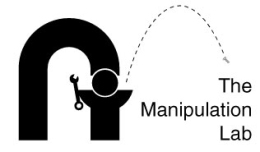
Robotics Institute Manipulation Lab, Carnegie Mellon University
The Manipulation Laboratory of the Robotics Institute at the Carnegie Mellon University targets autonomous robotic manipulation in the presence of uncertainty, and in order to solve this issue, the lab focuses on vital issues that could be the key in unlocking the autonomous robotic manipulation problem.
At the Manipulation Lab, researchers and scientists are looking at what the basic mechanics of manipulation are, how they could model physical processes, trying to solve how a robot can construct a plan in order to accomplish specified goals, and an answer of how minimal sensor information can be used to achieve tasks. These problems are being addressed by the lab in order to solve their main issue of how to arrive at effective autonomous robotic manipulation.
Among the past projects that the Manipulation Lab have undertaken are SToMP, the Desktop Robotics, the Legless Locomotion, Robotic Origami Folding, Tactile Sensing, Time-optimal Vehicle Trajectories, Factory Automation, Dynamic Manipulation, the Palm Pilot Robot Kit, and Pushing.
This lab is also responsible for the development of MOPED, which is efficient object recognition and pose estimation system for manipulation.
Currently, the Robotics Institute’s Manipulation Lab focuses on Simple Hands, Dynamic Climbing, and Personal Robotics. The first dwells on what hands a robot should possess, citing human hands as an example, and how generality and simplicity trade off in the design of the robot hands. This project is being headed by Professor Siddharta Srinivasa and Matthew T. Mason.
The next project focuses on the dynamics of robotic legged movement, from horizontal movements like walking, hopping and running, and extends further to vertical movements like leaping actions. Here, several mechanisms were utilized in order to make this project a success.
The first mechanism is the Dynamic, Single Actuated Climber (DSAC), which allows the robot to drive itself upwards by oscillating its leg in a symmetric manner using one actuator. Another mechanism is the Minimalist, Dynamic, Tube Climbing Robot, which is actually a materialization of the first mechanism. Here, it basically allows the robot to traverse and climb tubes of various and different shapes utilizing a simple motor, where the motor moves at an unconventional mass in constant velocity.
The third project, which is also being headed by Professor Srivinasa, is home to HERB; the Home Exploring Robot Butler. It is a bimanual mobile controller made up of two Barrett WAM arms on a Segway base that has a suite of image and range sensors.